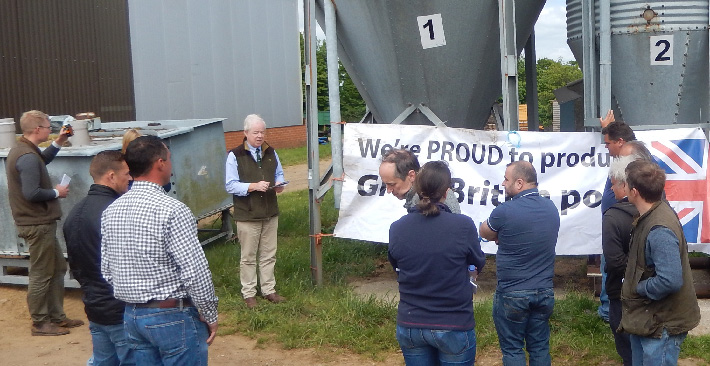“No worse than last week”. Those were the five words most commonly heard today, with spot prices (thankfully) appearing to end their recent slump. And although there were no signs of any more money being put on the table, at least slightly larger numbers were being absorbed, and this may help to pull some of the weight out of the system.
This is, however, in stark contrast with the situation north of the border where our Scottish neighbours have been faced with all sorts of teething problems at the recently revamped Brechin abattoir; causing a significant backlog of overweight pigs in the system, not to mention long travelling distances for pigs being slaughtered south of the border.
Spot bacon pigs traded at similar levels to last week, although with slightly better volumes being taken, and most one-off sales were at around £1/kg, although there were still some in the 90p/kg region for heavie. But, however bad the price is, at least this should help to get some of the product off the market and compete with cheap imports, which is better than the alternative of watching unsold pigs add another 8kg/week.
Most contract weekly announced prices have remained at similar levels, although the SPP took another tumble this week and now stands (or sits) at a new low of 113.42p, down by 1.3p on the week.
The euro ended something of a rollercoaster week on a slightly firmer note, trading on Friday worth 77.68p, compared with 77.04p a week ago. As a result, cull sow bids went up a modest penny reflecting the still static nature of EU mainland pigmeat prices.
Most UK cull sows were traded in the 54p to 56p/kg range, with the odd extra copper available in some places for large loads.
Weaner prices are, unfortunately, continuing to head south with the latest AHDB 30kg ex-farm average easing to £35.86/head and 7kg prices fairing no better with an average of £29.57/head. But, the spread in prices between spot and contract weaner quotes remain wide, and the same applies to the gap between Red Tractor and Freedom Food Farm Assurance levels.
There must surely come a time soon when one or two finishers are prepared to pile back into the market if it looks as though finished pig prices are on the turn, but some are still holding their breath and following the old maxim, “never catch a falling knife”.
The only other slightly positive feature of the market is the ongoing downward trend as far as feed prices are concerned, with the latest ex-farm feed wheat spot average of £97.80/t. This easier trend is also reflected on the futures market, where feed wheat traded at £104/t for March and £109.50/t for July.
However, the volume of UK grain exports is finally starting to lift and was high throughout December. This may put something of a bottom in what remains a bearish market at present.
Protein prices recorded a slight increase, with Brazilian soya (ex Liverpool) trading £2/t more at £261/t for March delivery and rapemeal (ex Kent) standing-on at £145/t for \March delivery.
And finally, for those of you like me who follow the sport of kings (horseracing in case you wondered), it’s interesting to see the comparison being made by the NPA between pig production and a punt at the bookies. At least at the races there’s a chance to win on some of them but, according to the NPA, currently producers are also losing an average of £7 on every slaughter pig they sell as a result of buying wheat and soya on a forward basis last year.
This all makes gloomy reading, bearing in mind that, according to data produced, COP levels are about 139p/kg at a time when it’s difficult for many producers to net much more than 115p/kg for their pigs, which represents a loss of 24p/kg or almost £20 per pig, which is certainly far more expensive than a day at the races.
Roll on Cheltenham . . . only four weeks to go!




